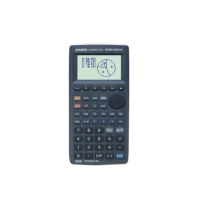– 39 –
M-1 Cam Diagram
Draw the cam diagram of a plate cam with a sliding coupled arm. The cam diagram is created
using cam rotation angles input from a multi-turn potentiometer, and from inputting the displace-
ment volumes of the sliding arm. Data is measured with the EA-100 Data Analyzer.
In the above photograph, the displacement of the
sliding arm is input from the sliding volume. The
illustration to the right is the circuit diagram.
• Slide resistance is large in the case of sliding
volume, so a strong spring must be used to press
the sliding arm against the cam. Consequently,
micro bearings are used to make the movement of
all parts smoother.
The potentiometer that inputs the cam rotation angle
is a 10-turn type, but a 5-turn or 3-turn type can also
be used.

